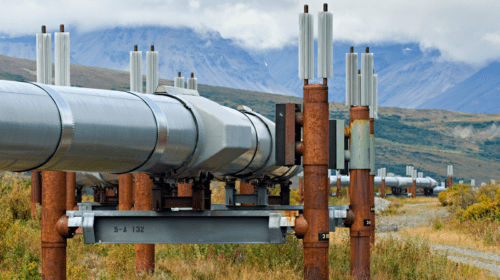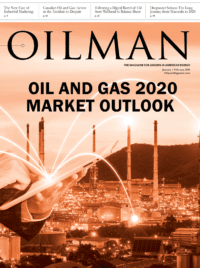“Customer first. Our people always.” TechnipFMC’s stated philosophy isn’t just a passing nod to the Experience Economy, it’s an indication of the company’s wholehearted embrace of a business strategy suited to the post-commoditized oil and gas industry, where profitability is connected to a company’s ability to deliver an elevated experience to customers and employees.
A subsea, onshore/offshore and surface project-management corporation with 37,000 employees and operations in 48 countries, TechnipFMC is among a wave of oil and gas companies that lately have begun to focus on experience as a powerful competitive differentiator in an otherwise highly commoditized business. As Quanah Gilmore, customer experience program manager for TechnipFMC, detailed during a recent oil and gas industry gathering, the company is investing heavily in experience management, or XM, in which it gathers, synthesizes and analyzes business operations (O) data and experience (X) data to strengthen the outcomes it provides to customers and employees. In this context, the “O” speaks to data related to demand forecasts and inventory levels, financials, new lease acquisitions, employee turnover, facility shut-downs and the like, while the “X” data has to do with retail customer and business partner/stakeholder satisfaction, fueling excellence, new talent acquisition, worker safety, etc.
TechnipFMC’s experience-focused approach is embodied by a simple equation, X+O=XM, where experience from the first point of interaction with the customer and the employee, right on through their entire journeys, connects directly to business outcomes. Experience management can manifest in a wide range of touchpoints along that journey, including the multi-channel digital portal experience, on-time delivery, the supplier experience, B2B order management, invoice accuracy and the retail experience on the operational side, and on the employee side, workforce engagement, workplace safety, employee recruiting, onboarding and retention, and exit feedback.
TechnipFMC’s investment in a digital XM platform capable of collecting and gaining insight from both X and O data is rapidly transforming the company’s relationships with its customers and employees, Gilmore reports. In the span of a year, TechnipFMC has seen its net promoter scores (an index that measures the willingness of customers to recommend a company’s products or services to others) as well as its overall employee engagement metrics increase significantly.
Experience management plays right into an evolving beyond-the-barrel mindset that is driving oil and gas companies to diversify with new revenue streams and business models that revolve around packaging products with services to deliver an outcome rather than just a commodity. With the ability to touch key points along the entire customer and employee journeys, XM’s potential impact goes far beyond what traditional customer experience (CX) efforts in the oil and gas business ever could.
Here’s a look at six areas where a focused experience management effort (supported by the appropriate end-to-end digital tools) can help to transform an oil and gas company:
- To strengthen relationships with partners/stakeholders. Solid business relationships among partners are critical to the success of upstream oil and gas ventures. XM gives oil and gas companies the ability to collect, analyze and act upon feedback from land owners and venture partners, providing them with the business insight they need to better understand how their counterparts in a particular deal view them before and after the transaction.
- To optimize well lifecycle and worker safety. Employees and contractors can be invaluable sources of insight on potential hazards and inefficiencies at drilling and well sites. By collecting their in-the-moment feedback on conditions at these sites, then combining that data with operational data (number of accidents, employee/contractor attrition rates, time to complete/close out activities, etc.), a company can gain real-time insights on workplace and work process-related hazards and impediments to productivity. They then can take steps to improve safety performance, which in turn cuts time to drill and complete wells.
- To attract and retain top energy industry talent. In a business where quality workers are hard to find and even harder to keep, experience is the great differentiator. Indeed, according to analysis by Qualtrics, organizations that focus on employee experience report up to four times more profit per employee, three times more revenue per employee and have a turnover rate 40 percent lower than the average company. Using digital tools connected to an XM platform, human resources departments can capture feedback from current and prospective employees (such as, “The hiring process took too long” or “I don’t get enough of the training I need to succeed in my job”) to better understand the factors that make them attractive or unattractive as an employer, then move to address any identified shortcomings.
- To deliver an exceptional maintenance service experience and boost technician engagement. As heavily as an oil and gas operation relies on OEM equipment, and an efficient service and maintenance program to keep those assets operating efficiently, XM capabilities give a company the means to collect feedback from its OEM partners and its own technicians to see a clearer, more complete picture of its service operations, with the ability to pinpoint reasons for underperformance, be it an issue with technician training, OEM parts shortages, etc. When technicians feel their concerns are being heard and addressed, they’re more likely to engage with their work and their employer.
- To improve supplier collaboration. For downstream-focused oil and gas companies, XM provides a new tool for strengthening business relationships with upstream suppliers/carriers. Let’s say that with operational data, a logistics manager identifies bottlenecks at the company’s own depots and refineries that can be traced to an issue with a third-party trucking fleet. Using XM, the logistics manager can solicit and analyze feedback from truck drivers (“Loading takes too long” or “I’m not privy to last-minute loading schedule changes,” for example), then take appropriate action to remedy the bottlenecks, such as working with the trucking company to improve planning and scheduling of loading and alerting drivers in real time about schedule changes.
- To strengthen a brand’s bond with retail customers. When consumers have a very good customer experience, they are 3.5 times more likely to make additional purchases than if they have a very poor CX, according to research by the Qualtrics XM Institute. With XM tools that enable them to capture regular and event-triggered customer feedback at the retail service station level, companies can gain timely, actionable insight on consumers’ shopping experience (“The doughnuts I usually buy in the morning have been stale lately” or “I really love the free car washes you provide after five fill-ups”).
In a world where companies are disproportionally rewarded when they deliver a great experience and punished when they don’t, XM enables oil and gas companies to deliver elevated outcomes at key customer, partner and employee touchpoints along the entire value chain. As a July 2019 report from the Qualtrics XM Institute concludes, those outcomes matter. For example, 71 percent of companies that are considered CX leaders report that their CX efforts had a positive impact on their financial performance. Those same CX leaders also tend to outperform their peers financially, and in the employee engagement category. Upstream, downstream and in between, experience is the X factor that the oil and gas business can no longer ignore.
Brent Potts is senior director of global marketing, oilandgas, at SAP.










